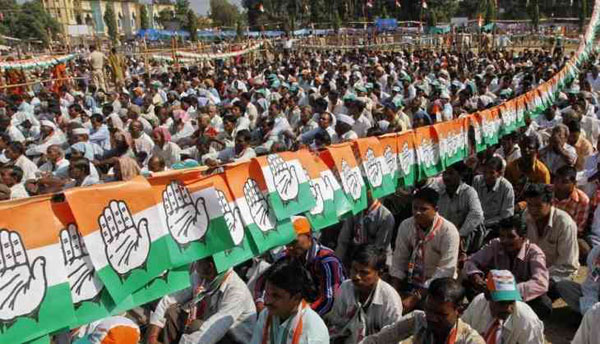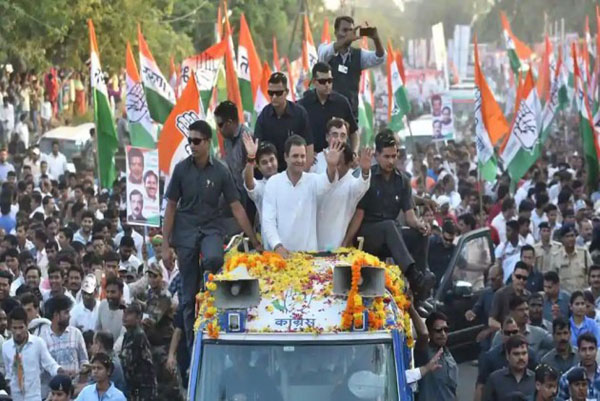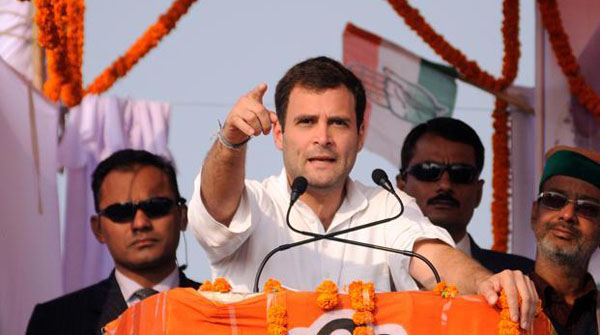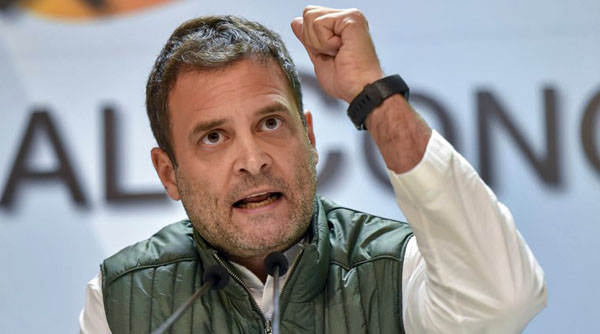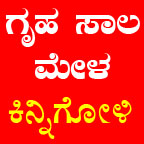Success Formula: How Congress Demolished BJP & RSS in 3 States
In the run-up to the assembly elections in Chhattisgarh, former chief minister Ajit Jogi had a one-to-one meeting with Congress president Rahul Gandhi. Jogi, a former Congressman, was keen on returning to the fold and told Rahul: “You let me know how many seats you want to win. I will deliver. But I must have full authority to select candidates.” Rahul kept quiet for a while, took a deep breath and told Jogi with a smile: “I respect you a lot. But I’m afraid I will not be able join hands with you. I have to stand by my workers.”
 Several political pundits, in and outside the party, had suggested that keeping Jogi out of the Congress coalition could be suicidal for the party as the latter had considerable influence on Scheduled Caste votes. When Jogi later formed a coalition with Mayawati’s Bahujan Samaj Party, there was almost a consensus that the Congress was yielding to the competition by allowing a split of the anti-BJP vote. Yet Rahul stood his ground and followed what his partymen and internal surveys advised him-stay away from Jogi. It’s this decisiveness that has been the hallmark of Rahul Gandhi’s electoral strategy since he took charge of the party in December 2017. From rejecting Mayawati’s demand for 50 seats in Madhya Pradesh to not yielding to the pressure of declaring a CM candidate in any of the three central Indian states, Rahul moved ahead with a specific plan, based on inputs from the ground and blended with political pragmatism.
Several political pundits, in and outside the party, had suggested that keeping Jogi out of the Congress coalition could be suicidal for the party as the latter had considerable influence on Scheduled Caste votes. When Jogi later formed a coalition with Mayawati’s Bahujan Samaj Party, there was almost a consensus that the Congress was yielding to the competition by allowing a split of the anti-BJP vote. Yet Rahul stood his ground and followed what his partymen and internal surveys advised him-stay away from Jogi. It’s this decisiveness that has been the hallmark of Rahul Gandhi’s electoral strategy since he took charge of the party in December 2017. From rejecting Mayawati’s demand for 50 seats in Madhya Pradesh to not yielding to the pressure of declaring a CM candidate in any of the three central Indian states, Rahul moved ahead with a specific plan, based on inputs from the ground and blended with political pragmatism.
The change, though, came gradually, and patience played a key role in Rahul’s strategy of overseeing the turnaround in the party’s fortunes-from losing 11 states since 2014 to winning three Hindi heartland states less than six months before the 2019 general election. Since 2014, the BJP had trampled all over the Congress in almost all their battles. This is the first time the Congress has defeated the BJP in direct contests. Five years ago, in the four states of Gujarat, Rajasthan, MP and Chhattisgarh, the Congress had won just 179 of the 700 assembly seats. The number has now doubled to 358. Seen in terms of Lok Sabha seats, the three states of Rajasthan, MP and Chhattisgarh sent 62 BJP members out of 65 seats in 2014. If one extrapolates from the latest assembly results, the BJP tally may come down to 31.
Even a year ago, this scenario was unimaginable. Despite numerous appeals, Rahul was in no hurry to make radical changes to the organisation, playing safe with his party working committee (CWC) mix of the old and young. He assured the veterans that their positions and influence were not under threat. Contrary to media speculation about his cold war with Sonia Gandhi’s former political secretary Ahmed Patel, the latter emerged as a trusted lieutenant. From handling the Karnataka post-poll scenario to keeping the lines of communication open with Opposition leaders to playing mediator in the infighting among senior leaders to managing party accounts, Patel has been the go-to man for Rahul. The Gujarat veteran also proved his political equity by outsmarting Amit Shah in a bitterly fought Rajya Sabha election in 2017.
Rahul made sure no senior leader who could potentially make trouble was idle. So former Rajasthan CM Ashok Gehlot was made Gujarat assembly polls in-charge and was then sent off to Karnataka to oversee post-poll alignments apart from burdening him with the role of the party’s organisational secretary. The primary goal was to utilise Gehlot’s political acumen where needed and give Rajasthan Congress president Sachin Pilot a relatively free hand to to run the state organisation.
Similarly, in MP, he had to create a working combination out of three stalwarts with their own personal ambitions-Kamal Nath, Jyotiraditya Scindia and Digvijaya Singh. Nath, a nine-time Lok Sabha MP, is known for his ability to generate resources and manage the organisation. He also had the support of former CM Digvijaya. Though Rahul was initially keen to project Scindia as the CM candidate, he decided against it and gave charge of the state to Nath for he felt that revamping the party structure was more important than declaring a CM candidate. He held three one-on-one meetings with Scindia and multiple rounds with Nath and Singh to make the trio work in tandem, ironing out most of their differences. Unlike in the past, Rahul was also pro-active in putting out the small intra-party fires that broke out now and then. So when a sulking Digvijaya made a statement asking whether it was his voice making the party lose votes, Rahul called and asked that he join him on stage in the next rally in the Gwalior region. From there, he took the MP stalwart to Delhi on his flight. Ever since, there has been no noise from Digvijaya.
Rahul also made a shift in sociopolitical positioning. Though the Congress may never openly admit it, the electoral strategy has borrowed hugely from the A.K. Antony report on the causes of the party’s 2014 Lok Sabha debacle. A key reason highlighted in it was that, over the years, a perception had developed among the majority Hindu population that it worked only for the minorities. The immediate need was to bust that image, for it was directly benefitting the BJP. Besides, with the restricted geographic appeal of Muslim parties such as the AIMIM and AIUDF, the Congress had reason to worry about losing the minority votes in states where they were in a direct contest with the BJP. “The Muslims will not vote for the BJP. They have to back the Congress in most states where there is no strong regional force,” says a Rajya Sabha MP of the party.
There was near unanimity among the Congress brass on launching the party’s brand of Hinduism-though they hate how the media calls it ‘soft Hindutva’. So Rahul emerged as a janeu-dhari (sacred thread wearing) Shiv bhakt, preaching his narrative of being an inclusive and compassionate Hindu. From hugging Modi in Parliament to visiting Mansarovar to doing the rounds of temples to declaring his gotra, the idea was to challenge the BJP’s monopoly over the Hindu agenda. But more than the BJP, Rahul wanted to hurt the RSS, the engine that has been a big part of the BJP’s electoral success since 2014. During an interaction with tribal students and young Congress workers at Jagdalpur in Chhattisgarh on July 29, 2017, he asked partymen not to wait for the elections to fight the enemy-and the enemy was the BJP but its ideological mentor, the RSS. “Go to the field. The RSS has given you many issues… fight for the people. You can call me wherever you want. I will come and stand with you,” Rahul said. The Congress president was convinced that what gave the BJP the edge was not just its organisational strength and Amit Shah’s election machinery but also the untiring work of the RSS cadre during elections.
To fight the cadre-based network, Rahul focused on increasing the party base, helped along with the launch of the Shakti app. The brainchild of research cell head Praveen Chakravarty, the mobile-based app not only helped Congress enrol new members, but also set up a two-way communication between the party president and new entrants and grassroots workers. From conducting surveys on local issues to taking the opinion of party workers on candidate selection in every constituency, the app helped Rahul draft his campaign notes and get a sense of changes on the ground. Of course, there have been miscalculations, especially when it came to party tickets. Nine of the 13 independents elected in Rajasthan and the four independents in MP are Congress rebels who were denied tickets.
Two other critical issues came up through the Shakti inputs-unemployment and the agrarian crisis. These issues almost catapulted Congress to power in Gujarat, and were the single biggest source of discontent in MP, Chhattisgarh and Rajasthan. In the three states, the Congress won 201 (56 per cent) of the 359 rural seats. While the BJP held on to the urban seats in MP, winning 44 of 82, it marginally lost out to the Congress in Rajasthan and was swept away from urban areas in Chhattisgarh. “The youth want jobs and development but the government, too busy polarising the electorate, did not pay attention. The people have now given their verdict,” says Sachin Pilot.
The victory also shows once again the significance of the UPA government’s signature scheme, MNREGA, which played a key role in enhancing rural incomes though some say it failed to contribute much to infrastructure asset building. BJP rule, on the other hand, has added to rural infrastructure, especially in the three heartland states-from building roads, houses and toilets to providing access to electricity and LPG. Over 10 million rural houses have been built under central schemes in the last three financial years with more than 27 per cent of them in MP, Chhattisgarh and Rajasthan. All three states have also achieved near 100 per cent electrification.
But with rural incomes plunging, particularly in the post-demonetisation phase, the investment in rural infrastructure did not fetch the BJP any dividend. “Without jobs and a regular income, how will one pay the power bill or refill the (unsubsidised) gas cylinder? Besides, these are government numbers, mostly on paper,” says Nath. Even the decision to sever all ties with Jogi was based on inputs from grassroots workers who said his hold over the SC and tribal votes was hyped and that his departure would bring in more upper caste and OBC support for the Congress. It also reduced infighting, a constant friction between the state leadership and the Jogi camp, when he was in the Congress. Rahul was correct in his assessment, as the Jogi-Mayawati alliance won just six seats.
The Congress was also successful in exploiting the growing perception among Dalits and tribals that the BJP wasn’t concerned about their welfare. In all three states, the majority of the SC/ ST seats have gone to the Congress, a role reversal from 2013 when the BJP almost swept these seats. The Congress chief led from the front on the ground as well. Since June, he has addressed 82 rallies-more than any national leader from either party-in the five states that went to the polls. The results speak for themselves.


